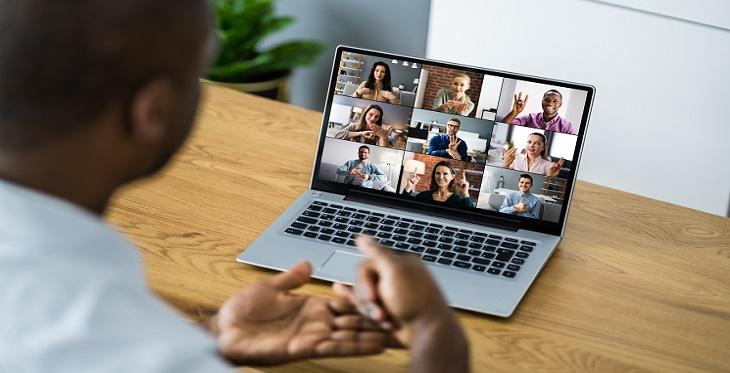
Telemedicine has for years been touted as providing access to healthcare for everyone, anywhere, anytime and it has been quite successful in doing so in many respects but disparities still exist among a number of patient populations. In particular, those who traditionally have challenges accessing healthcare due to physical challenges often experience similar or even greater challenges with telemedicine. Think about for a minute. Telemedicine is predominantly provided using audio and/or video-based telecommunications technologies. This fundamental fact of how telemedicine visits occur can actually exacerbate digital disparities.
According to the Americans with Disabilities Act (ADA), an individual with a disability is defined as:
- a person who has a physical or mental impairment that substantially limits one or more major activities; or
- a person who has a history or record of such an impairment; or
- a person who is perceived by others as having such an impairment
Under Section 504 of the 1973 Rehabilitation Act, no qualified individual with a disability shall, by reason of his or her disability, be excluded from the participation in, denied the benefits of, or subjected to discrimination under any services, programs, or activities of the covered entity (e.g., healthcare providers). In the context of healthcare, nondiscrimination on the basis of disability means equal access to available health care services, whether those services are provided in-person or via telehealth.
Some basic facts highlight the problem. About 15% of American adults (37.5 million) over 18 report some trouble hearing, 2 to 3 per 1,000 US children are born with detectable hearing loss in one or both ears and overall 1 in 8 people (13%) 12 years or older has hearing loss in both ears. Interestingly, non-Hispanic white adults are more likely than other racial/ethnic groups to have hearing loss and non-Hispanic black adults have the lowest prevalence among adults aged 20-69. Rates increase with age. The statistics for vision impairments are equally high. About 12 million people over 40 years have a vision impairment, with 1 million who are blind and 6.8% of children younger than 18 have a diagnosed eye and vision condition. The annual economic impact of major vision problems for those over 40 is over $145 billion! For blindness, access to healthcare is especially critical as 90% of blindness caused by diabetes is preventable and early detection and treatment of conditions such as diabetic retinopathy is efficacious and cost effective.
So what can we do in the telemedicine community to help ameliorate these disparities? The National Consortium of Telehealth Resource Centers has developed a fact sheet to help providers. Some of the key recommendations are actually fairly easy to carry out. Inventory products, services, and factors required to provide effective telehealth services to patients and ensure they meet basic accessibility requirements for people with disabilities. Consider compatibility of assistive technology (e.g., alternative keyboards) and whether they can work effectively with your chosen telehealth modality. Learn about and incorporate accessibility features (e.g., close-captioning) of software programs you use. Be sure to include the patient’s caregiver, family member, or home health aide during telehealth visits. Increase your knowledge and awareness on cultural competency and linguistic sensitivity. The easiest thing to do ask patients with disabilities about their accessibility requirements!
Some additional aids to consider may take a little more effort but are worth it. For those with hearing loss consider: qualified sign language interpreter, qualified cued-speech interpreter, qualified tactile interpreter, real-time captioning or communication access real-time translation (CART), video remote interpreting (VRI), use written materials, ensure the patient has access to headphones or a headset, confirm participants are wearing their hearing aids or amplification device, and use video whenever possible to allow lip reading and provide visual clues like gestures. For those with vision loss consider: a qualified reader, information in large print, Braille, or electronically for use with a computer screen-reading program, have an audio recording of printed information, be aware of your background - there needs to be contrast between you and your background and blurring the background may make it challenging for the patient, ensure lighting is bright enough for patients to clearly see your face, use simplified and enlarged text, ensure patients have a computer-screen reading program for transmission of electronic information and try providing an audio recording of printed information provided during the appointment. Additional ideas and tips can be found on the Health & Human Services (HHS) website
There is also good news in terms of funding. The Federal Communications Commission (FCC) recently announced that under the National Deaf-Blind Equipment Distribution Program (NDBEDP), also called “iCanConnect,” may provide up to $10 million annually from the interstate telecommunications relay service fund (TRS Fund) to support local programs that distribute equipment to eligible low-income individuals who are deafblind to access telecommunications service, Internet access service, and advanced communications services. This is clearly a boon for telemedicine applications. The announcement includes a state-by-state list of the initial allocations for the 56 covered jurisdictions.
Hearing and vision loss are just two common challenges deal with. Other physical, mental and behavioral challenges are very common as well, and many of the tips above can be adapted to these patients as well, especially simply reaching out and asking them what their needs are and how you can help meet them as well as involving the patient’s caregiver, family member, or home health aide during telehealth visits. Basically telemedicine must be available to any patient and programs should make it a priority to develop strategies and tools to empower all patients no matter what their resources and capabilities to access safe, effective and efficient care.


